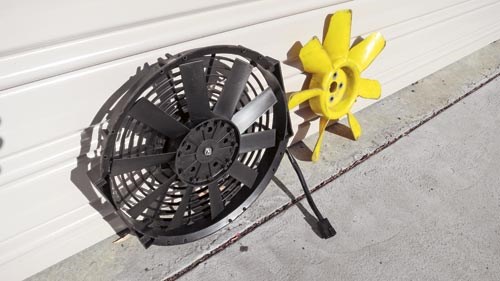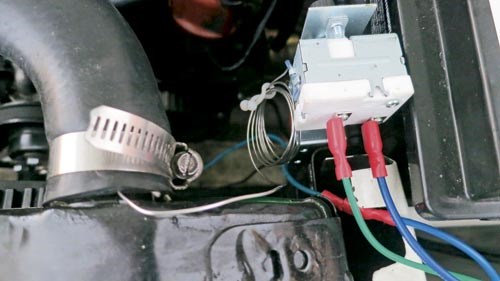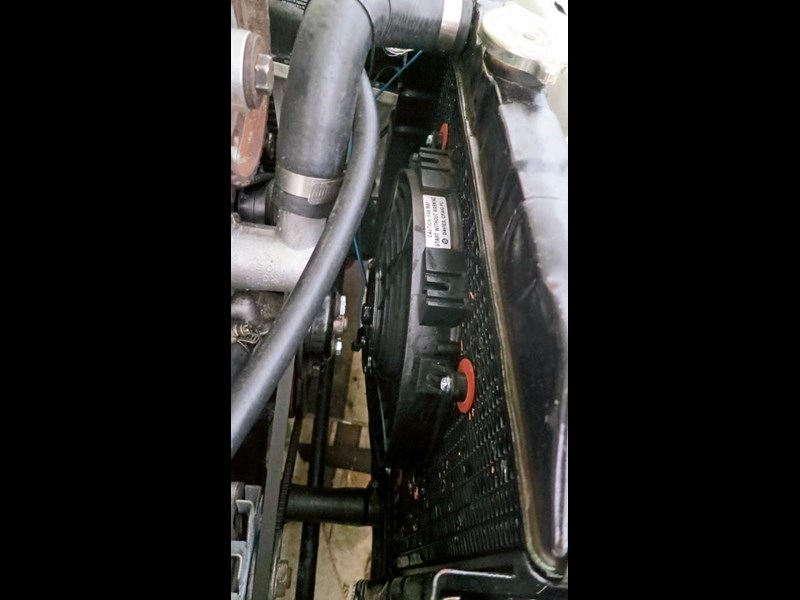1979 Ford RS2000: Our shed
 1979 Ford RS2000
1979 Ford RS2000

 1979 Ford RS2000
1979 Ford RS2000

 1979 Ford RS2000
1979 Ford RS2000

 1979 Ford RS2000
1979 Ford RS2000

 1979 Ford RS2000
1979 Ford RS2000

 1979 Ford RS2000
1979 Ford RS2000


|
|
1979 Ford RS2000
|

|
|
1979 Ford RS2000
|

|
|
1979 Ford RS2000
|

|
|
1979 Ford RS2000
|

|
|
1979 Ford RS2000
|

|
|
1979 Ford RS2000
|
Radiator temps have left Morley's cool little Ford hot under the collar...

|
|
Our shed: 1979 Ford RS2000
|
Ford Escort RS2000
CLOCK WORK
Summer: Beach cricket, frosty beers and daylight saving. And overheating cars.
The RS2000 didn’t actually overheat, but the needle on the factory temp gauge did get a bit lairy a couple of times when I got stuck in traffic recently. The Pinto now runs a wild camshaft and pretty high compression, so it wouldn’t surprise me if it’s generating a bit more heat than a stocker. And with weather girls everywhere predicting a month of 40-plus in Melbourne, I figured it was time to make a pre-emptive strike.
Since I had no idea of the state of the radiator, I did the smart thing and ripped it out for a visit to the local rad shop. The instructions were simple: Take a peek inside and see if it’s blocked. If it is, clean it and if it’s totally stuffed, let me know and I’ll decide what to do about it. In the end, the radiator’s external appearance wasn’t deceiving; it had been cleaned fairly recently and was in good shape inside. Step one complete.
Since it was all pulled apart, I figured now was the time to ditch the old mechanical fan (which doesn’t even have a fluid clutch) and drop in a thermatic jobbie. Thing is, even with the old fan removed, there wasn’t a lot of space between the water pump and the radiator, so I diced the old fan spacer and bought some shorter bolts so the pulley could be bolted back on without the bolts bottoming into the water pump body.
The fan was a cinch to source via the internet (but I still went with a locally made brand) and I ordered a fitting kit with it. What I didn’t get (and ended up purchasing seperately) was the actuating switch that senses the coolant temp and pulls the fan in when necessary. There are two ways to do this: Either use an electronic switch that plumbs into the radiator tank or go old-school and use a thermocouple which is inserted into the top radiator hose. I went for the latter since it allows me to change to a multi-core radiator in the future if I decide to do so.
With everything buttoned up, I started her up and stuck a thermometer into the radiator. Even on a pretty hot day, she warmed up to 92 degrees and stayed there as the fan cut in and out. And then it all went wrong.
In seconds, the temperature gauge went through the roof and the oil-pressure gauge took a dive. Funny thing was, it didn’t smell or feel hot. Also, the mechanical oil-pressure gauge was still showing 40psi at 2000rpm and it was only the electrical pressure gauge that had headed for the zero mark. Obviously, I shut her down quickly but a while later, when it was cooler, I went to restart it and it just didn’t want to crank. Seized? Please, Satan, no.
A bit more bum scratching had me thinking that what I really had was a dud earth which was sending the electrical gauges crazy and preventing the starter motor drawing enough current to crank the Pinto. When I removed the earth lead from the battery to have a poke around, sure enough, the whole lead came off in my hand. The crimp-fitting on the cylinder-block end of the negative lead had failed, leaving the earth lead dangling uselessly in the breeze.
A quick re-crimp put it back together and she immediately cranked like a dervish. Every gauge was now happy... and so was I.
*****
More reviews:
> Our shed: Ford Escort RS2000
> Buyers guide: Ford Escort RS2000
Search used:
Unique Cars magazine Value Guides
Sell your car for free right here
Get your monthly fix of news, reviews and stories on the greatest cars and minds in the automotive world.
Subscribe

.jpg)











.jpg)

